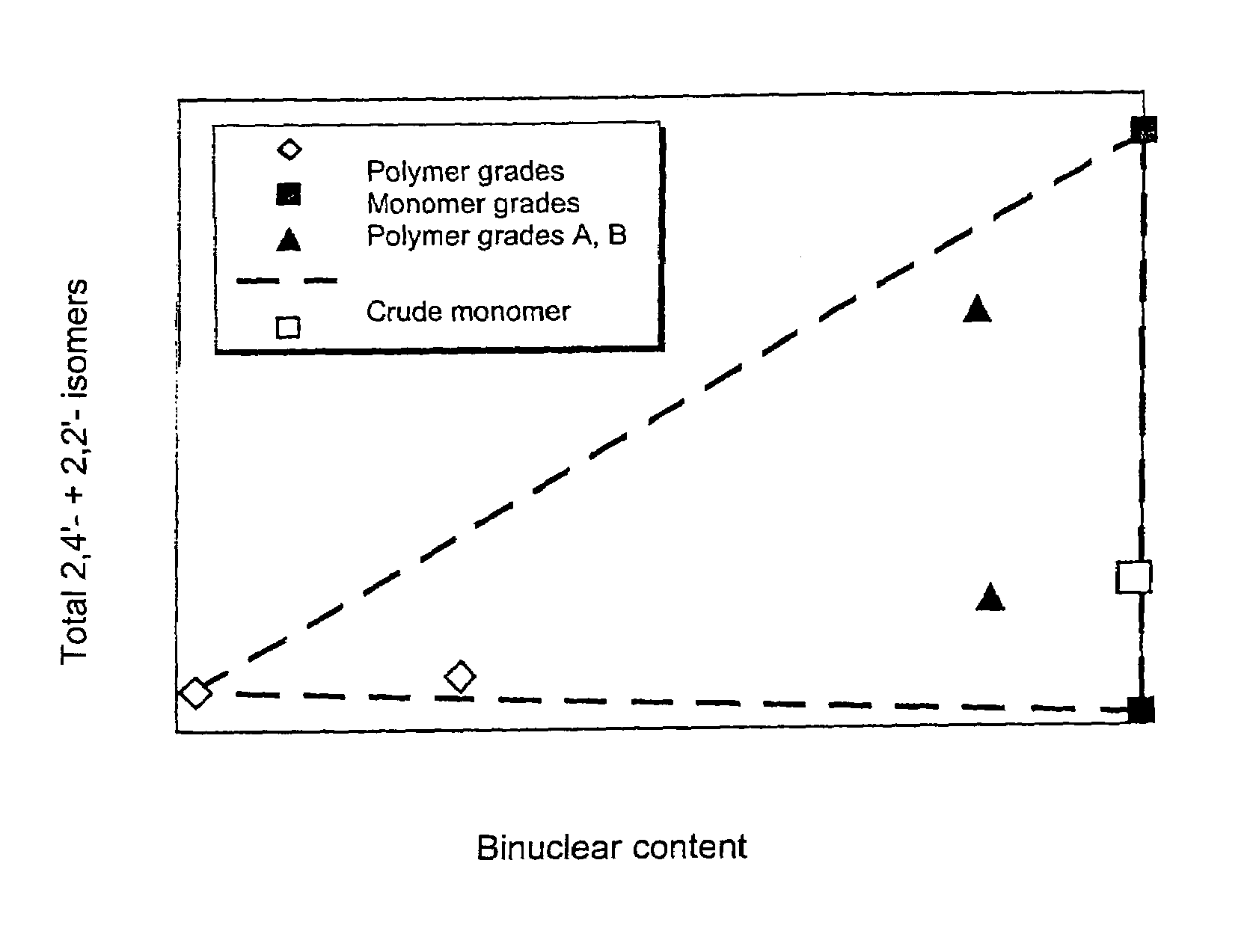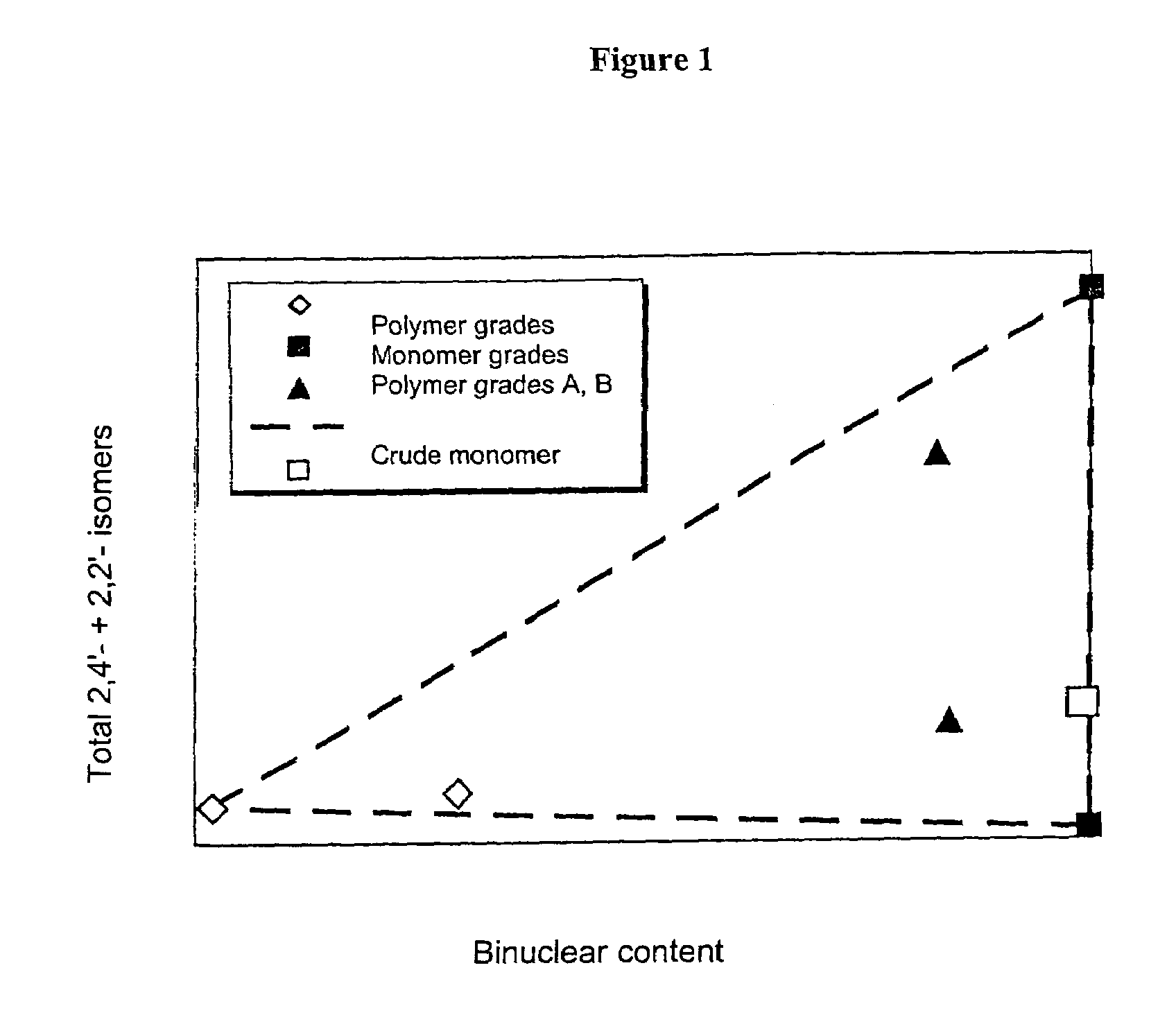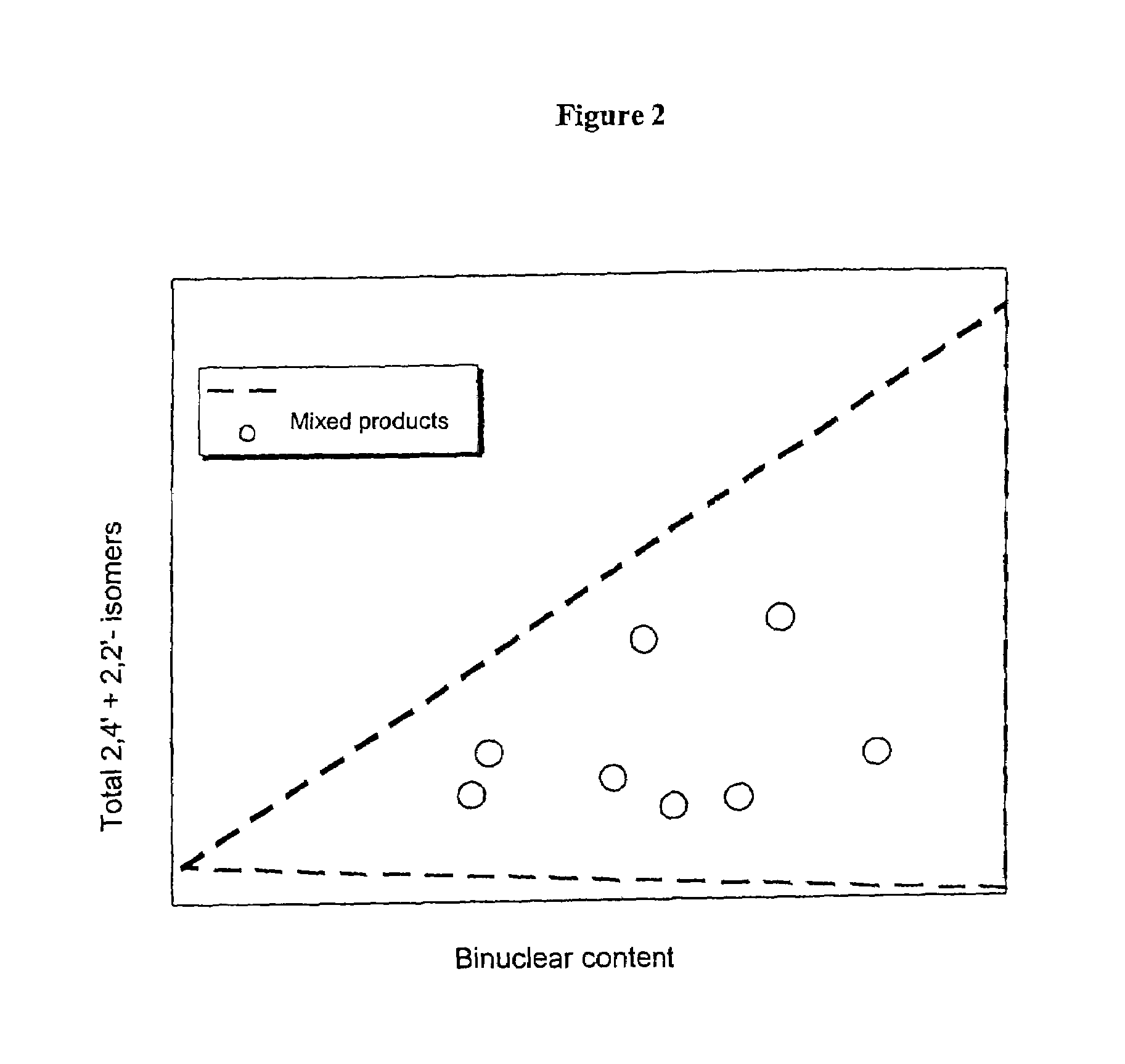Production of mixtures of diisocyanates and polyisocyanates from the diphenylmethane series with high contents of 4,4'-methylenediphenyl diisocyanate and 2,4'-methylenediphenyl diisocyanate
a technology of diisocyanates and polyisocyanates, which is applied in the preparation isocyanic acid derivatives, purification/separation of isocyanic acid derivatives, etc., can solve the problem of high equipment and high energy consumption, and still contains undetected high concentrations of secondary components, so as to achieve low secondary component proportion and simple and energy-saving process
- Summary
- Abstract
- Description
- Claims
- Application Information
AI Technical Summary
Benefits of technology
Problems solved by technology
Method used
Image
Examples
example 4 (
According to the Invention)
[0082]Production of a mixed MDI product from 35.9% polymer grade, 45.7% pure crude monomer, 18.3% 2,4 grade resulted in the following product quality
[0083]
Grade2,2′-MDI2,4′-MDI4,4′-MDITotal binuclear MDIMCBPHIBlend 40.56%16.3%62.5%79.4%
[0084]Only around 18% of energy-intensive precision-distilled isomer product was required for the production of this blend, which meant a reduction in the use of precision-distilled isomer products by around 70%. The two polymer grades A and B obtained from MDA production using very complex methods can be omitted altogether. A product comparable in quality to that obtained in Example 2 was produced, with only a slight, uncritical increase in 2,2′ content.
example 5 (
According to the Invention)
[0085]If the high 2,2′ content of 3.9 wt. % is actually required, an additionally available product quality (2,2′-rich type) containing approximately 50% 2,2′-MDI and approximately 50% 2,4′-MDI can be used as the fourth component. The starting values from Example 1 can be reproduced exactly in this way.
[0086]Production of a mixed MDI product from 30.2% polymer grade, 51.8% pure crude monomer, 11.4% 2,4 grade and 6.7% 2,2 grade resulted in the following product quality
[0087]
Grade2,2′-MDI2,4′-MDI4,4′-MDITotal binuclear MDIMCBPHIBlend 53.9%16.3%62.5%82.7%
[0088]Only around 18% of precision-distilled product (2,2′-rich grade and 2,4′-rich grade) was needed for the production of Blend 5. The elaborately produced polymer grades A and B can be omitted altogether. This results in a reduction in the amount of energy-intensively produced raw materials of around 80% in comparison to Example 1.
example 7 (
According to the Invention)
[0097]The crude MDI mixture from Example 6 was broken down into the polymeric MDI product and the clean pure crude monomer and a low-boiling component fraction.
[0098]A glass column with a product feed to the bottoms evaporator and stainless steel distillation packing with 4 theoretical separation stages, the liquid backflow from the head of the laboratory column being able to be removed and returned in part to the column as a reflux, was used as the experimental set-up. The distillate was completely precipitated at the head and 95% was returned to the column as a reflux using a sample divider. The head pressure was set to 5 mbar by means of a vacuum pump.
[0099]The stream of 500 g / h crude MDI mixture was supplied at 180° C. to the continuously operated equipment. Following a feed phase of 2 h, the following material flows were removed from the equipment as products:
[0100]Bottom of the distillation equipment: 60 g in 10 min with the following composition:[01...
PUM
| Property | Measurement | Unit |
|---|---|---|
| molar ratios | aaaaa | aaaaa |
| temperatures | aaaaa | aaaaa |
| pressures | aaaaa | aaaaa |
Abstract
Description
Claims
Application Information
 Login to View More
Login to View More - R&D
- Intellectual Property
- Life Sciences
- Materials
- Tech Scout
- Unparalleled Data Quality
- Higher Quality Content
- 60% Fewer Hallucinations
Browse by: Latest US Patents, China's latest patents, Technical Efficacy Thesaurus, Application Domain, Technology Topic, Popular Technical Reports.
© 2025 PatSnap. All rights reserved.Legal|Privacy policy|Modern Slavery Act Transparency Statement|Sitemap|About US| Contact US: help@patsnap.com



